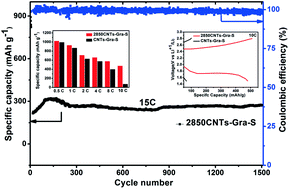
Nucleophilic attack on a carbonyl or 1,4-Michael acceptor is not an SN2 reaction. It is also very misleading. It's like saying a chicken and a human are the same thing because they both have two legs. SN2 reactions involve nucleophilic attack on the sigma-antibonding orbital. Direct Coupling of sp2 and sp3 Carbon Centers Baran Lab D. Lin Direct Construction of Carbon-Carbon Bonds: A Brief Introduction What chemists have always wanted to do: CH3 CH3 CH2 CH2 CH4 H 3CCH 3 H 3C CH The problem: no one has yet figured out what M is. Consequently, chemists have resorted to exploiting functional groups (aldol. How many sp2 carbon are there in the following molecules. HO Estrone (a hormone) a.
- Sp2 Carbon Bonds
- Sp2 Carbon Example
- Sp2 Carbon Ir Spectrum
How can you tell the difference between sp3, sp2, and sp hybridization?

1 Answer
At its core, the meaning of #sp^n# is that one #s# orbital mixes with #n# number of #p# orbitals close in energy to form degenerate (same-energy) hybridized atomic orbitals that can allow access to more electrons than available from 'pure' (#s#, #p#, etc) atomic orbitals for bonding.
#sp^3# bonding involves using four#sp^3#-hybridized atomic orbitals, so it must have four electron groups. EX: #'CH'_4#
#sp^2# bonding involves using three#sp^2#-hybridized atomic orbitals, so it must have three electron groups. EX: #'BH'_3#, #'H'_2'C'='CH'_2#
#sp# bonding involves using two#sp#-hybridized atomic orbitals, so it must have two electron groups. EX: #'H'-'C'-='C'-'H'#, #:'C'-='O':#
I've explained #sp^3# and #sp^2# hybridization below, and from that, I think you can imply what #sp# hybridization is.
#mathbf(sp^2)#-HYBRIDIZED BONDING
For instance, #'H'_2'C'='CH'_2# involves two #sigma# bonds (one for each single bond), and then one #sigma# and one #pi# bond (used in one double bond), so three electron groups are needed, but 4 electrons need to be donated by carbon.
Since carbon has 4valence electrons, but its #p# orbitals (which are highest in energy) only contain 2, it needs to mix two of the three #2p# orbitals with the #2s# orbital to make use of 2 more valence electrons. This is favorable because it involves the lowering of the energies for two of the #2p# orbitals, increasing stability.
This results in the usage of three #sp^2# hybrid orbitals to bond: the ones with one electron for #sigma# bonding to hydrogen, and the one with two electrons for incorporating one #sigma# and one #pi# bond with the other carbon.
1#2s# orbital had been incorporated, and 2#2p# orbitals had been incorporated, so it is called #sp^2#, having #33%##s# character and #66%##p# character.
#mathbf(sp^3)#-HYBRIDIZED BONDING
A similar reasoning follows for #sp^3# bonding. Let's take #'CH'_4# as an example. It needs four electron groups, and it needs to make four IDENTICAL #sigma# bonds (one for each single bond).
Sp2 Carbon Bonds
4valence electrons are needed from carbon, but only 1 electron needs to be contributed per #sigma# bond. So, we need four separate degenerate hybrid orbitals to make each #sigma# bond. Therefore, all three #2p# orbitals must mix with the #2s# orbital and stabilize in energy overall to get four degenerate hybrid orbitals.

This results in the usage of four #sp^3# hybrid orbitals to bond: the ones with one electron allow #sigma# bonding to hydrogen.
Sp2 Carbon Example
1#2s# orbital had been incorporated, and 3#2p# orbitals had been incorporated, so it is called #sp^3#, having #25%##s# character and #75%##p# character.
I think from here, you can imply what #sp# hybridization means. (Hint: It can also be called #sp^1# hybridization.)
Sp2 Carbon Ir Spectrum
Related questions



